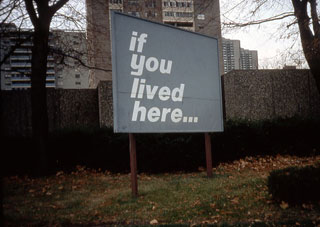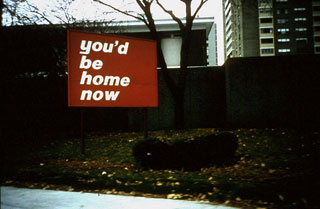New York | 1989
Das Projekt umfasste drei Ausstellungen, an denen insgesamt mehr als zweihundert von Rosler eingeladene Künstler und Aktivisten teilnahmen: ‘Home Front’ fokussierte die verschiedenen Formen des selbstorganisierten Aktivismus wie Mietstreiks oder selbstverwaltete Wohnprojekte, ‘Homeless: the Street and other Venues’ bezog sich vor allem auf die sichtbare und unsichtbare Obdachlosigkeit in den Strassen und U-Bahnhöfen, beziehungsweise in Wohlfahrtshäusern oder wechselnden Unterkünften bei Freunden und Verwandten, in ‘City: Visions and Revisions’ schliesslich sollten unter Mitarbeit von Architekten und Planungsgruppen der Obdachloseninitiativen Entwürfe zur alternativen Stadtplanung entwickelt werden.
Möntmann, Nina (2002): Kunst als sozialer Raum. Köln, Verlag der Buchhandlung Walther König: 80.
By the end of the 1980s, during the period in which Martha Rosler was realizing her three-part exhibition and action project If You Lived Here…, New York was frequently described as the city where social distinctions and disintegration were the most blatantly visible, a “localized unity of the sharpest contradictions,” a “city of contradictions, of rich and poor, of glitz and gloom.”The homeless here represented the tip of the iceberg of unbalanced state and urban social policies, the “principal conservative government objective being to make these people invisible, to get them out of the way, to neutralize them.” […]
The (in)visibility of the socially underprivileged and the properties of the urban spaces they inhabit formed the starting point for the If You Lived Here…project, a concrete and participatory realization of Rosler’s thinking on the topic. […]
The title “If You Lived Here…” is borrowed from an advertising slogan. It was part of a real estate agent’s poster text attempting to pitch downtown residences to middle-class suburban commuters with the message: “If you lived here, you’d be home now.” In the context of the exhibitions, the slogan reads, on the one hand, as an appeal for the strategic conversion of the art institution into a living space; but it also points to the role of the Dia Art Foundation—and of galleries and art spaces in general—as driving forces in the gentrification of city districts that leads to the rising rents that force longtime residents to move away, or, in the worst cases leave them homeless.
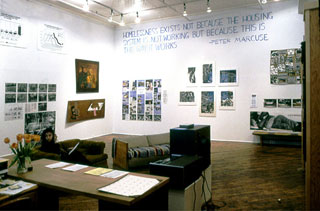 Exhibition view of “Homeless: The Street and Other Venues.”
Exhibition view of “Homeless: The Street and Other Venues.”
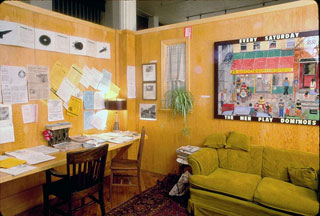 Exhibition view of “Home Front,” interior of reading room showing Willie Birch’s Every Saturday the Men Play Dominoes, 1987.
Exhibition view of “Home Front,” interior of reading room showing Willie Birch’s Every Saturday the Men Play Dominoes, 1987.
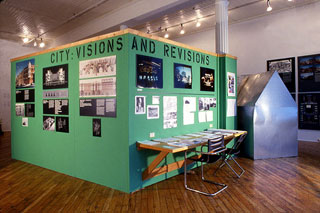 Exhibition view of “City Visions and Revisions.”
Exhibition view of “City Visions and Revisions.”
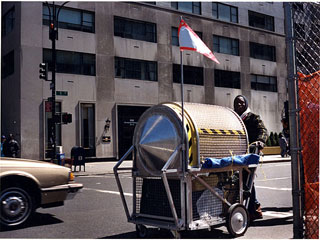 Krzysztof Wodiczko, Homeless Vehicle Project, 1988.
Krzysztof Wodiczko, Homeless Vehicle Project, 1988.
Quellen Texte: Siehe oben
Quellen Bilder: e-flux Journal 10/2009

